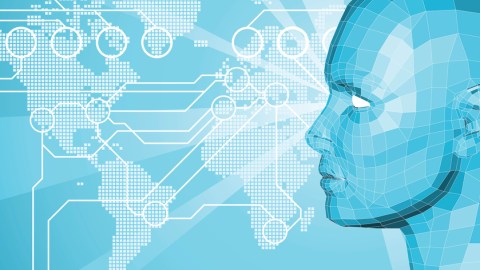How Will Adding Intelligence to Everyday Things Change Your World?

On a global level, we are adding connected intelligence to both machines and objects using chips, micro sensors, and both wired and wireless networks to create a rapidly growing “Internet of things” sharing real-time data, performing diagnostics, and even making remote repairs. Many jobs will be created as we add intelligent connected sensors to bridges, roads, buildings, homes, and much more. By 2020, there will be well over a billion machines talking to each other and performing tasks without human intervention.
Think of it this way: from phones to cars to bridges, embedded technologies are increasingly making the things we use smarter every day. For example, some of the newest cars use cameras mounted in the rear to see if something is in the way when you are backing up. If there is something in the way, the car will apply the brake even if you don’t or you are slow to react. Likewise, the concrete in new bridges has embedded chips that can let engineers know when the concrete is cracking, stressed, and in need of repair before the bridge collapses. In addition, sensors on the surface of the road going over the bridge will detect ice and wirelessly communicate the information to your car. If you don’t slow down, the car will slow down to a safe speed for you.
But it’s not just cars and bridges that are getting smarter. Kraft Foods worked with Intel to develop a smart vending machine that can market specific products by demographic group. Basically, the vending machine uses a camera that’s mounted on the front of the machine to identify characteristics of the person using the machine in real time. The first application has been to determine the user’s age and gender, and then based on this information, the vending machine offers free samples that will appeal to the exact demographic of the user.
In other words, you may be at the vending machine purchasing a candy bar or some potato chips. Because the vending machine knows your age and gender, it will give you a specific marketing message along with a code you can use from your smart phone to claim a free sample of the product. The sample will then be mailed to your home. In this scenario, it’s the vending machine using a combination of facial recognition, facial demographic data, artificial intelligence, and access to the cloud to qualify the user and select the most relevant item to market.
Here’s another example: A number of years ago I was working with Accenture. They were experimenting with an innovative device that I haven’t seen used publicly yet, but I would guess we will see some version of it in the near future.
Their device was a kiosk with a digital mirror that could be placed in large public places where people gather, such as a shopping mall or airport. People look in the mirror and see a reflection of themselves. They then answer some questions, such as “Do you smoke? If yes, how much?” “Do you drink? If yes, how many?” “Do you exercise? If yes, how often?” After answering a number of lifestyle questions, your image morphs into what you could look like in 10, 15 and 20 years, based on your answers.
Finally, the machine suggests that you change some of your answers to see what impact your new lifestyle could have on how you look in the future. For example, it would ask “What if you quit smoking?”and then it displays the impact that one lifestyle choice could make on your future appearance. Or, what if you increased your exercise? Or, what if you improved your diet? Suddenly, wrinkles are gone and fat disappears based on the alternate scenarios.
The goal is to show people the impact of their behavior on their future, because most of us spend little time thinking about that. Now we can. While this technology was experimental years ago, you can see how it can easily turn into a tool for helping people make healthier lifestyle choices as well as a powerful marketing tool. Now you have an intelligent machine giving you lifestyle suggestions based on the impact your habits may have on your future. And of course, it could be used to market appropriate products to you, such as weight loss aids or stop smoking products, based on your challenges and what you want to change in your future.
These are just a few examples of how everything we use is getting smarter thanks to connected intelligence. The message is clear: Today’s smart devices are just the tip of the iceberg. Current smart devices will only get smarter, and technology that is currently “dumb” will develop intelligence quickly. This intelligence will change not only how companies market to consumers, but also how we live, work, and play in this age of technology-driven transformation.




